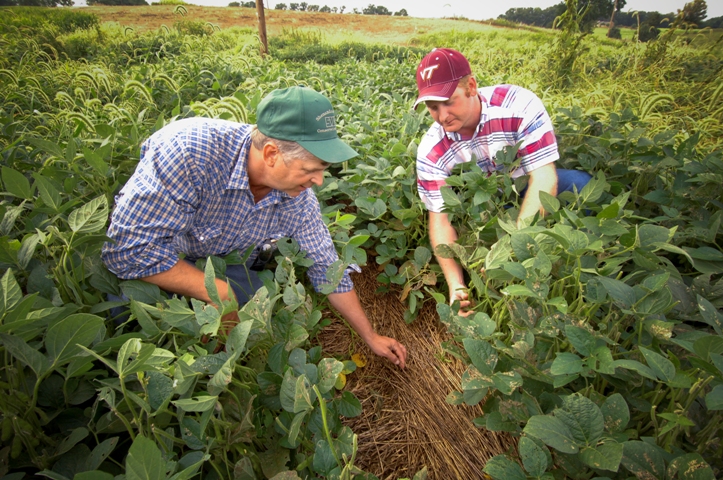IAEA helps Cuba implementing breeding program to develop new varieties of crops
The new varieties have gone on to be nationally licensed this year and subsequently registered in the global database, managed by the Joint FAO/IAEA Centre of Nuclear Techniques in Food and Agriculture.

Tomatoes and soybeans are enjoyed in cuisines all around the world – and demand for them constantly grows. Have you ever wondered how farmers have been able to meet this demand and the role nuclear techniques play in it?
With the help of the IAEA, in collaboration with the Food and Agriculture Organization of the United Nations (FAO), Cuba’s National Institute of Agricultural Science (INCA) has been implementing breeding programmes using irradiation and biotechnology to develop new varieties that can better cope with extremes in growing conditions imposed by climate change.
As a result of this work, improved new varieties of tomato and soybean (Giron 50 and Cuvin 22) were successfully harvested for the first time this May on a research test field. They will now be distributed to farmers, alongside the 21 other varieties developed previously by the Institute in a diverse range of crops such as rice, green beans and roselle – a species of hibiscus.
The new varieties have gone on to be nationally licensed this year and subsequently registered in the global database, managed by the Joint FAO/IAEA Centre of Nuclear Techniques in Food and Agriculture.
“Since 2009, through plant mutation breeding, we have offered a way to develop new climate-hardy crop varieties and hence, contribute to the livelihoods of local farmers and enhanced food security in 18 countries, including Cuba,” said Fatma Sarsu, a plant breeder at the Joint FAO/IAEA Centre of Nuclear Techniques in Food and Agriculture, who retired in mid-2021.
Crops in Cuba
The island, which has a tropical climate, is seeing rising temperatures, changing rainfall patterns, longer periods of drought and the intrusion of salty waters along with coastal areas. These are contributing to lower crop production.
Climate change increasingly exposes the plants’ vulnerability to extreme weather conditions, leading to the higher use of environmentally harmful chemical fertilisers and pesticides. Therefore, Cuban experts are looking towards the improvement of crops as an alternative, more environmentally sustainable solution. To do this, they are using nuclear and isotopic techniques to induce novel genetic variation for improved crop performance and increased production of crucial crops.
One of these is soybean. Commonly used to produce oil, animal feed, yoghurt and meat substitutes, the demand for this crop is growing worldwide, including in Cuba. Developing improved varieties is the first step – then these new varieties need to be nurtured to provide the food islanders need.
Using isotopic techniques to improve bio-fertilisers, Cuban researchers can now increase the production of high-quality soybeans bred to be rich in iron, protein and oil. Bio-fertilisers contain living micro-organisms that restore the soil’s natural nutrition, helping plants grow stronger and healthier without the need for chemicals. Isotopic techniques are used to measure the plants’ ability to both absorb the bio-fertiliser and to fix nitrogen from the air, the former for better crop management, and the latter for both soil health and crop performance.
“The project hasn’t only created new healthy crop varieties, but the capacity building over the years has led to an efficient protocol of work and the creation of expertise in nuclear techniques in the region, where we are continuously working together and learning from one another,” said Maria Caridad Gonzalez-Capero, Leader of Technical Nuclear Applications at INCA.
IAEA's positive nuclear influence
When genetic improvement is desired for new variety development at the quick turn-arounds, such as with accelerating climate change, nuclear techniques for induced genetic diversity provide a larger selection pool for better and faster selection than conventional breeding methods. This combined with a streamlined breeding programme has the potential to deliver improved varieties within a short time.
With support to countries provided under the IAEA’s technical cooperation programme, nuclear techniques have been used to develop varieties with climate adaptation needed traits in many crops, including rice, common beans, tomatoes and soybeans.
“Thanks to the use of these diverse techniques, seeds of specially selected new variety lines were provided to farmers and producers, leading to successful harvests,” said Gonzalez-Capero. “And with the reduction in the use of nitrogen-based fertilisers, the country’s agricultural greenhouse gas emissions will also fall.” THE SCIENCE Plant mutation breeding Plant mutation breeding is the process of exposing plant seeds, cuttings or other planting material to radiation, such as gamma rays or X-rays, and then planting the seeds or cultivating the irradiated material in a sterile rooting medium, which generates a plantlet. The individual plants are then multiplied and examined for their traits. Those exhibiting the desired traits continue to be cultivated.
Plant mutation breeding does not involve gene modification, but rather uses a plant’s own genetic material and mimics the natural process of spontaneous mutation.
ALSO READ
IAEA Board to meet on Zaporizhzhia attacks on Thursday, diplomats say
Russia says it calls emergency IAEA board meeting on Zaporizhzhia attacks
IAEA head says drone attack on Zaporizhzhia nuclear plant significantly increases risk of major accident, reports AP.
Drone attack on Zaporizhzhia nuclear plant significantly increases accident risk, IAEA head says
IAEA Board to meet on Ukraine's Zaporizhzhia on Thursday, diplomats say










